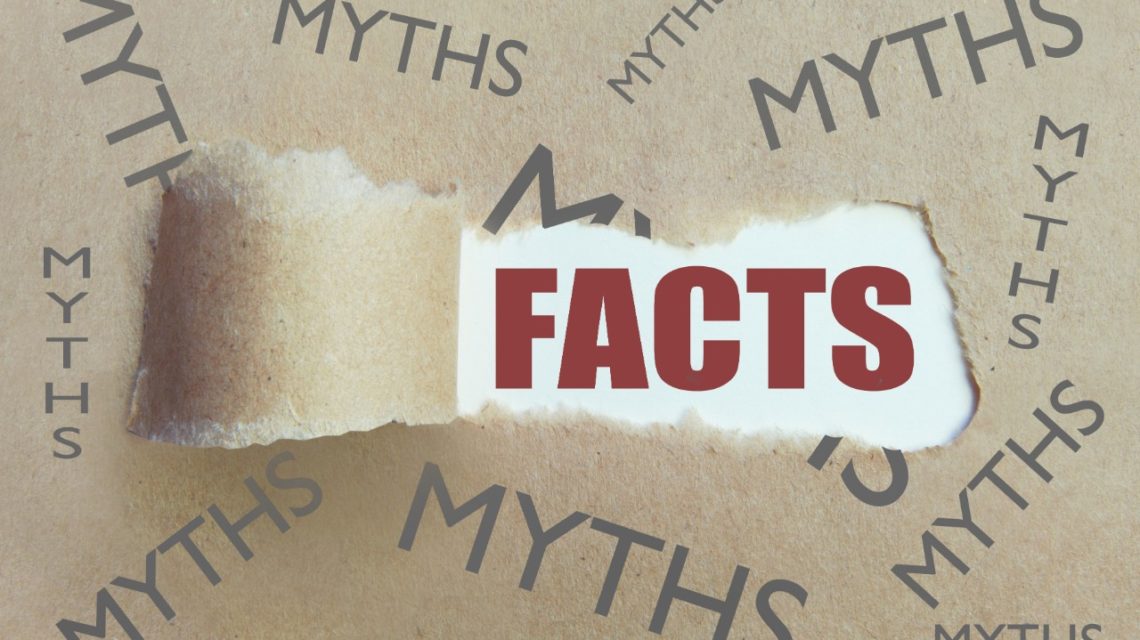Whatever a person’s reasons, there is no denying how popular teeth whitening has become. However, for all its popularity, myths about teeth whitening still abound. People get nervous about teeth whitening but its really very safe and you don’t have to be a celebrity to want whiter, healthier-looking smile.
Myth 1: Teeth whitening harms enamel.
There’s a misconception that whitening works by chemically melting off or laser zapping the outer layer of enamel. Not true. Teeth whitening is “bleaching” and works by opening the pores of the outer layer of the tooth and allowing a cleaning agent, specifically hydrogen peroxide, to access the inner stains in the dentin of the tooth.
To be fair, some of the teeth whitening products that you can buy over the counter may do some damage on your enamel or gums, especially if you overuse it. However, your teeth and gums will be perfectly fine after a professional teeth-whitening treatment that uses a high-strength whitening gel, which is known to be safe and effective.
Myth 2: The laser used in teeth whitening is dangerous.
It’s not really a laser. It’s a UV or LED light that activates the bleaching products and helps them penetrate the teeth. It’s why in about an hour of professional whitening you can see immediate results.
Myth 3: Whitening toothpaste is a budget-friendly option.
It’s true, whitening toothpaste is more economical compared to an in-office treatment or even trays and strips, but only if your idea of whitening is a thorough cleaning. Whitening toothpastes work by removing surface stains but they won’t change the intrinsic color of your teeth. While these “whitening” toothpastes may have whitening agents in them, they are far too weak to have an effect. Whitening chemicals need to be in contact with the teeth for a minimum of 20 minutes in order to effect a color change.
Whitening toothpaste can remove stain that is on the outside of the teeth (extrinsic stain), however, whitening toothpaste and professional dental cleanings will not change the color (intrinsic stain) of the teeth.
Myth 4: You can never drink coffee or wine again.
If that were true, no one would do it! It is recommended to avoid “heavily staining” and acidic foods and drinks such as red wine, coffee, tea, soda, orange juice, cranberry juice, soy sauce, and chocolate for the first few days after a whitening treatment. The bleaching really opens up the tubules in your enamel and the chemical reaction continues working for a few days. Try enjoying your daily cup of coffee or tea drink through a straw to minimize contact with your teeth.
Myth 5: Teeth whitening will make your teeth too white and fake looking.
You don’t have to worry about glowing in the dark. Teeth are inherently yellow, and the color comes from within. Even if you achieve the maximum whiteness that’s possible for you—and everyone’s whitening potential is different based on your genetics—your teeth will never be as white as Ross’s on that episode of Friends. And when you see actors on TV and in magazines with sparkly white choppers, rest assured that it’s either Photoshop or porcelain veneers.
Myth 6: Teeth Whitening results last forever.
Unfortunately there is no such thing as permanent teeth whitening results. The duration of how long it lasts will differ from person to person. The effects of good living will continue to show on your teeth – this includes drinking wine, tea or coffee, and smoking which are the biggest culprits of staining. Once you have achieved the look you desire you will have to maintain your whitening results with periodic treatments, as your teeth will naturally darken with age and staining from your diet.
Myth 7: Baking soda can be used for whitening teeth.
A common household product, baking soda is often considered a natural whitener. Its abrasive composition can help to erase surface stains, but it won’t be as effective in removing deeper stains. A significant downside, however, to using baking soda too often is it can damage tooth enamel. It can also disrupt the good to bad ratio of bacteria in your mouth, which can speed up the build-up of plaques that can discolor your teeth.
Myth 8: Over-the-counter teeth whitening is just as good as professional whitening.
All teeth whitening gels have different levels of carbamide peroxide or hydrogen peroxide, the active ingredient that whitens your teeth. Pure hydrogen peroxide is the strongest for achieving the best results. Professional whitening gel is a significantly stronger then over-the-counter product. Comparing the effects and results of over-the-counter products to a professional whitening treatment is like comparing apples to oranges. If you’re only going for a temporary removal of the discoloration on the surface of your teeth, then store-bought products may do the job. Professional whitening, however, penetrates your teeth’s deeper layers and addresses the intrinsic staining that makes them look darker.
Myth 9: All teeth whiten the same.
All teeth do NOT whiten the same. How white your teeth will get depends on what color they are to begin with and the source of the discoloration. Brown or yellow teeth (often the result of superficial staining caused by smoking, coffee, and tea) will usually get whiter. Gray teeth (often caused not by stains but by pigment deep inside the tooth) may lighten less.
There are many causes of tooth discoloration. The most common include genetics, aging, consumption of staining substances (smoking, coffee, tea, and colas), tetracycline (antibiotic) staining, excessive fluoride, and old fillings.

